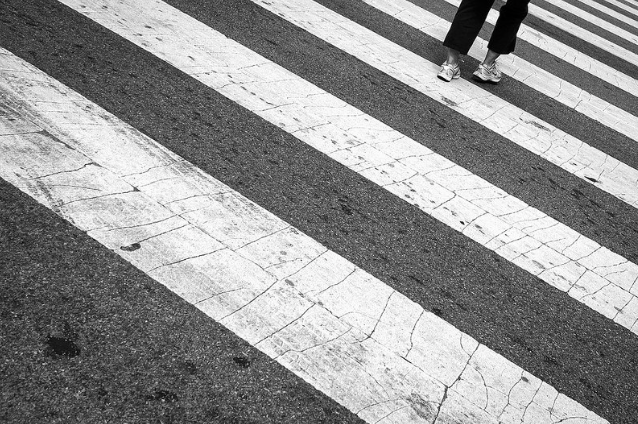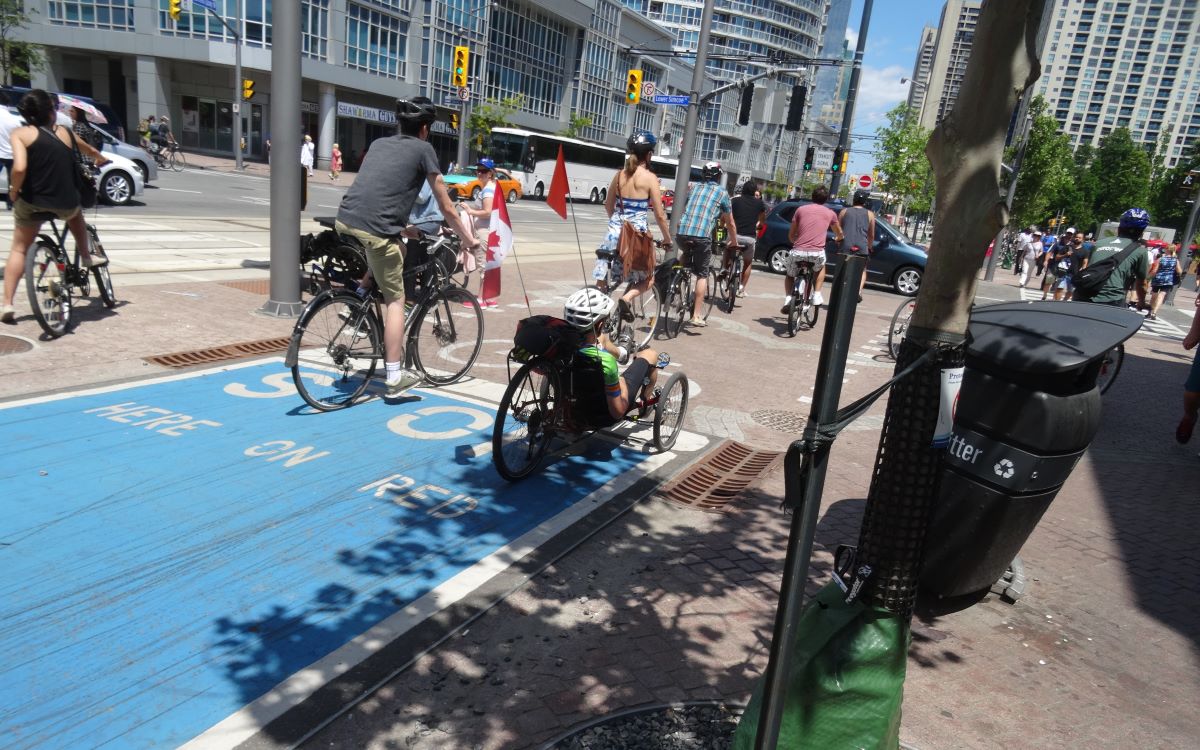
This post is part of a series featuring stories and research that will be presented at the Pro-Walk/Pro-Bike/Pro-Place conference September 8-11 in Pittsburgh.
You're approaching an un-signalized crosswalk. How likely are drivers to obey the law and stop to let you cross the street?
According to a national survey of experts, that depends on a few factors, including the width of the road you're trying to cross, how many other pedestrians are in the area, and even what part of the country you happen to be in.
Robert Schneider, professor of urban planning at the University of Wisconsin, and his co-author Rebecca Sanders interviewed almost 400 professionals from the fields of public health, planning and engineering, and safe streets advocacy around North America. They asked them to assess the likelihood of a motorist yielding to a pedestrian in their town at different kinds of crosswalks that do not have traffic signals.
Some interesting patterns emerged. Here are the three major factors that, according to respondents, influence whether drivers show courtesy to pedestrians.
1. The Width of the Road
This was the most often-mentioned factor: The number of lanes. Everything else being equal, the local experts said drivers are less likely to yield on wider roads. Because more street width means higher traffic speeds, it's just a matter of physics that drivers will be less likely to react and yield to pedestrians.
2. Pedestrian Volumes
The survey respondents also expressed broad agreement that drivers were more likely to yield to pedestrians where more people walk. Downtowns, neighborhood business districts -- anywhere there is likely to be a lot of people on foot, respondents said drivers are more likely to hit the brakes, because they are more likely to be anticipating pedestrians. In these area, the experts expected more assertive pedestrian behavior as well as more cautious driver behavior.
3. The Region of the Country
Okay, those first two points are pretty intuitive. A more unexpected finding of the survey was that there appears to be some regional differences in how drivers behave when asked to yield the right-of-way. Schneider and Sanders found that experts on the West Coast consistently ranked drivers as more accommodating of pedestrians than in the East and Midwest. The authors aren't sure why that is.
How might regional differences influence driving behavior? Is it related to enforcement of the laws, or urban design, or driver education?
"It’s kind of a fascinating thing to think about," Schneider told Streetsblog. "That’s one of the big questions we suggest for future research."
Schneider and Sanders are planning to submit their article for publication in the Institute of Transportation Engineers' journal this spring. In the meantime, they will be presenting some of the findings at the Pro-Walk/Pro-Bike/Pro-Place Conference coming up in Pittsburgh in September.





